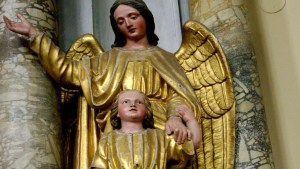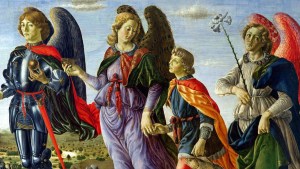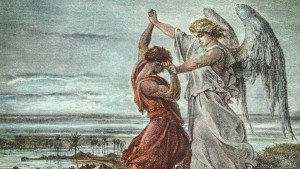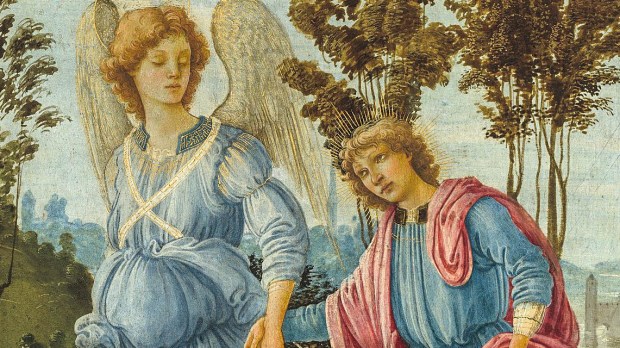Angels are “messengers,” spiritual beings created by God. Even though they are typically invisible to the eye, they are all around us, fulfilling the tasks they were given by God.

Read more:
A visual guide to Guardian Angels: Here’s what you need to know
Many are familiar with the nine “choirs” of angels, a division that is found throughout the Bible. However, according to tradition, these nine choirs are further grouped into three “hierarchies,” with each group having an overall mission.

Read more:
The 9 choirs of angels and the roles given them by God
This type of organization of angels is argued by St. Thomas Aquinas in his Summa Theologiae. Responding to the objection that all angels are included under one hierarchy, Aquinas writes, “On the contrary, Dionysius (Coel. Hier. vi) distinguishes three hierarchies of angels.”
Aquinas is drawing from a previous proposal written by Dionysius the Pseudo-Areopagite, a Christian theologian and philosopher whose writings date to the 5th and 6th centuries. He wrote in The Celestial Hierarchy, “Theology has given to the Celestial Beings nine interpretative names, and among these our divine initiator distinguishes three threefold Orders.”
First Hierarchy
Dionysius writes, “This, so far as I know, is the first Order of Celestial Beings which are established about God, immediately encircling Him: and in perpetual purity they encompass His eternal Knowledge in that most high and eternal angelic dance, rapt in the bliss of manifold blessed contemplations, and irradiated with pure and primal splendors … they know pre-eminently many divine matters, and they participate as far as they may in Divine Understanding and Knowledge.”
In other words, this first hierarchy of angels are closest to God and remain in his presence. The top-most choir in this hierarchy are often called the “seraphim,” which means “burning ones,” symbolizing the great love they have for God.
Second Hierarchy
Dionysius writes, “They are true Lords, perpetually aspiring to true lordship, and to the Source of lordship, and they providentially fashion themselves and those below them, as far as possible, into the likeness of true lordship. They do not turn towards vain shadows, but wholly give themselves to that true Authority.” They lead “those below it, as far as possible, to the Supreme Power which is the Source of Power, which it manifests after the manner of Angels in the well-ordered ranks of its own authoritative power.”
To put it more simply, this hierarchy of angels is a kind of “middle-management,” and orders those choirs below them. It is also believed that these angels help guide the universe and are God’s instruments in ordering all of creation.
Third Hierarchy
Dionysius writes, “Accordingly the Word of God has given our hierarchy into the care of Angels, for Michael is called Lord of the people of Judah, and other Angels are assigned to other peoples. For the Most High established the boundaries of the nations according to the number of the Angels of God.”
This last hierarchy includes angels that are directly in contact with humanity, such as Guardian Angels and Archangels. It is believed that every person, as well as every Nation and People, has a Guardian Angel. They are the direct messengers of God to humans and have delivered such messages as the birth of the Messiah to the Virgin Mary.
This traditional ordering of angels is an accepted Catholic belief, though not part of official Church dogma. Dionysius readily admits, “I hold that none but the Divine Creator by whom they were ordained is able to know fully the number and the nature of the supermundane Beings and the regulation of their sacred Hierarchies; and furthermore, that they know their own powers and illuminations and their own holy supermundane ordination.” These three hierarchies are at best “theories,” though very well researched ones and in accord with Catholic theology.

Read more:
In images: 5 Amazing facts about Archangels

